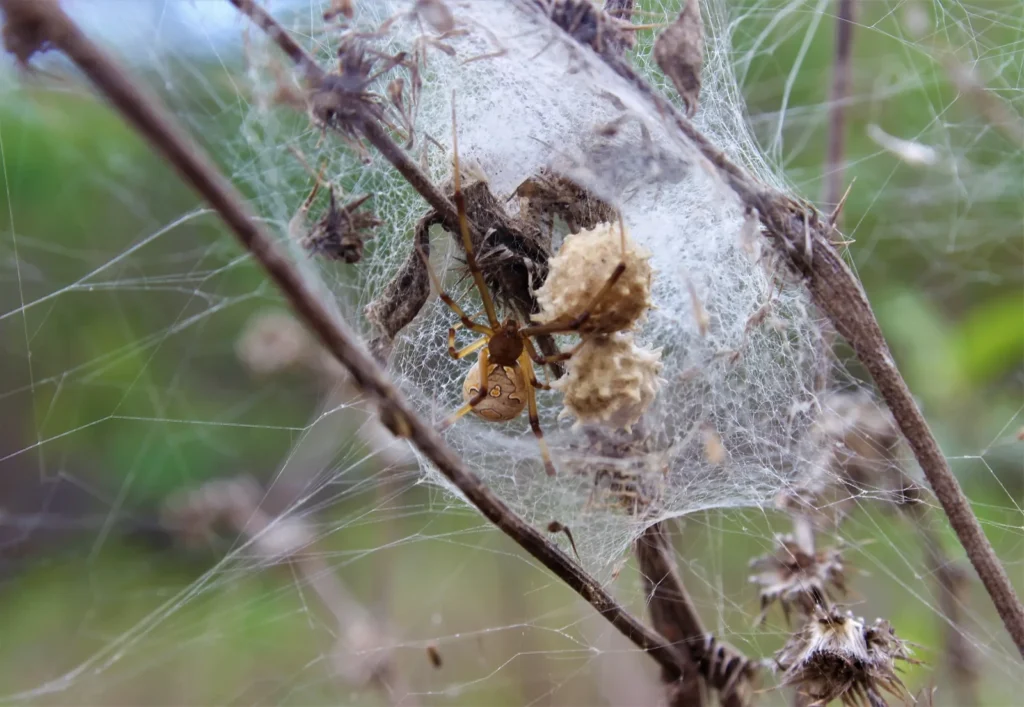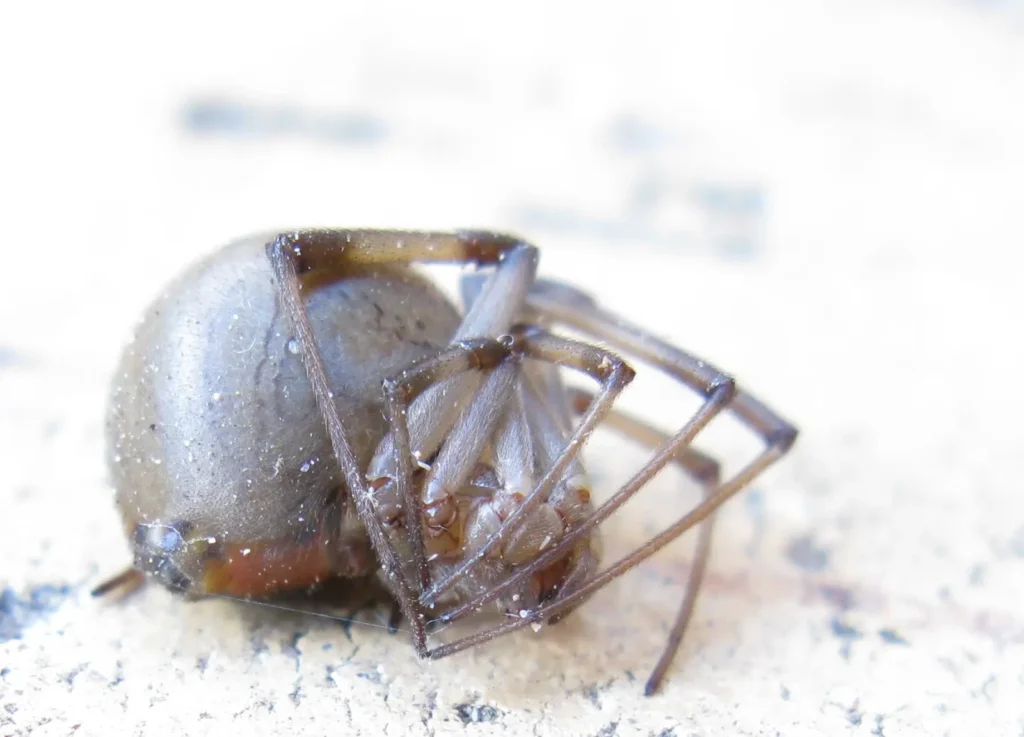Brown widow (Latrodectus geometricus) – one of the least known, but interesting representatives of the genus Latrodectus, which also includes the more famous black widows (Latrodectus mactans, Latrodectus hesperusIt got its name because of its characteristic brown color, which distinguishes it from its black relatives.
Although its bite contains a powerful neurotoxic venom, it is usually less dangerous to humans than the bite of a true black widow. This spider is rapidly expanding its range and is becoming more common in different parts of the world.
📌 What makes the brown widow special?
✔ Less aggressive than the black widow
✔ Has a unique geometric belly coloration
✔ Lays eggs in characteristic “spiky” cocoons
✔ Its venom contains latrotoxin, but is weaker than black widows
Let's take a closer look at this spider and find out if it really poses a danger!

Scientific classification
✔ The Kingdom: Animals (Animalia)
✔ Type: Arthropods (Arthropoda)
✔ Class: Arachnids (Arachnida)
✔ Row: Pavuk (Araneae)
✔ Family: Shadow spiders (Theridiidae)
✔ Gender: Latrodectus
✔ View: Latrodectus geometricus
📌 The species was scientifically described in 1841.
Appearance
🕷 What does a brown widow look like?
✔ Body size:
• Females: 10-15 mm
• Males: much smaller – up to 5 mm
✔ Paw span: up to 3 cm
✔ Colour: from light brown to dark brown or gray
✔ Distinctive features:
• The abdomen has a geometric pattern of dark and light stripes
• Under the abdomen there is a characteristic hourglass orange or yellow label
✔ Egg cocoon: has distinctive spines, unlike the smooth cocoons of the black widow
📌 It is easy to distinguish a brown widow from a black widow: its color varies from light brown to gray, while the black widow is shiny black.

Distribution area and habitat
🌍 Where does the brown widow live?
✔ Originally from South Africa
✔ Distributed in warm regions around the world:
• USA (Florida, California, Texas)
• Caribbean
• South America
• Australia
• Asia
✔ Prefers places with human activity:
• Basements, garages, sheds
• Wooden fences, mailboxes
• Under the seats of plastic chairs and toys
📌 Unlike the black widow, this species is rarely seen in the wild and is almost always found near humans.
Lifestyle and behavior
🌿 How does a brown widow behave?
✔ Builds a characteristic three-dimensional web
✔ It hunts mainly at night
✔ Avoids contact with people, tries to hide
✔ Less aggressive than the black widow – bites are rarely intentional
📌 In case of danger, the brown widow will rather play dead than attack.
Features of the web
🕸 How does a brown widow use its web?
✔ Creates a chaotic but very strong web
✔ Hunts, waiting for prey entangled in a spider's web
✔ Spider web has high adhesiveness and tear resistance
📌 The brown widow spider's web is extremely strong and can trap even large insects such as crickets and cockroaches.
Food
🍽 What does a brown widow eat?
✔ Insects (flies, mosquitoes, butterflies, crickets, cockroaches)
✔ Sometimes – small spiders or scorpions
✔ Occasionally – small lizards and amphibians
📌 Like the black widow, this species does not prey on humans and is not aggressive towards large animals.
Reproduction
❤️ How does the brown widow reproduce?
✔ Males are much smaller than females.
✔ After mating, the female sometimes eats the male, but less often than the black widow.
✔ Lays eggs in spiky cocoons
✔ Up to 150 spiderlings can hatch from one cocoon.
📌 The female can store the male's sperm for several egg clutches.

Is it dangerous for humans?
🚨 Is the bite dangerous?
✔ Yes, but less than a black widow
✔ The venom contains alpha-latrotoxin, but its concentration is lower
✔ Bite Symptoms:
• Mild pain, redness
• Convulsions, nausea (rare)
• Headache, weakness
✔ The bite rarely requires medical attention.
📌 If you are bitten by a brown widow, seek medical attention, especially if you are allergic to spider bites.
Interesting facts
💡 The brown widow was only discovered in Florida in the 2000s, but quickly spread across the United States.
💡 Its egg cocoons are easily recognizable due to their unique “spikes”.
💡 Due to its less aggressive behavior, the brown widow may displace the black widow in some regions.
How to avoid meeting a spider?
🛑 To avoid encountering a brown widow:
✔ Don't leave things on the street unattended.
✔ Seal cracks in houses
✔ Clean places where spiders can hide
📌 But remember – this spider rarely bites people, and it should not be destroyed without reason.
Conclusion
🕷 The brown widow (Latrodectus geometricus) is an interesting but underrated relative of the black widow.
🌿 It is less aggressive and its venom is weaker, so you shouldn't be afraid of it!
📌 Follow simple safety rules, and meeting her won't be a problem!